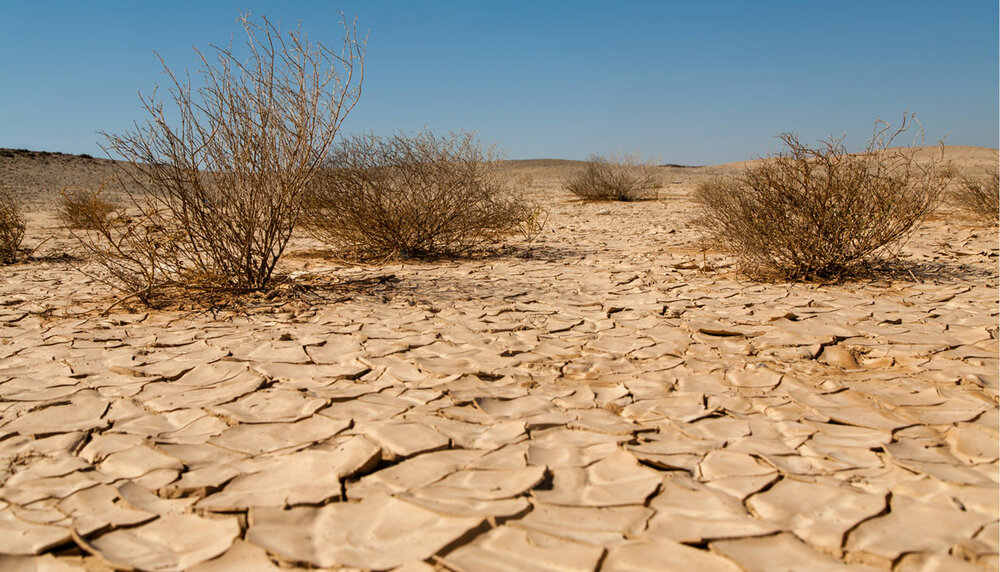Iran becoming more vulnerable to desertification

TEHRAN — Desertification and land degradation are seriously threatening our planet and lives of millions of people accordingly.
Iran is also becoming more vulnerable to desertification and currently, according to the Forests, Range and Watershed Management Organization, 100 million hectares of the country’s land area is threatened by desertification.
Iran, being an arid and semi-arid country, has lower precipitation and higher evaporation rate compared to world averages which both increase the country’s vulnerability to land degradation and desertification, Khosro Shahbazi deputy director for aquifer management at the Forests, Range and Watershed Management Organization told ISNA news agency on Tuesday.
The United Nations’ official definition says desertification is land degradation in typically dry areas resulting from various factors, including climatic variations and human activities.
According to NASA, scientists are beginning to say that desertification is a reduction in the productivity of the land that is not reversible. In other words, land is desertified when it can no longer support the same plant growth it had in the past, and the change is permanent on a human time scale. Many things can cause desertification.
Drought, overgrazing, fire, and deforestation can thin out vegetation, leaving exposed soil. If the nutrient-rich top soil blows or washes away, plants may not be able to return. Overfarming or drought can change the soil so that rain no longer penetrates, and the plants lose the water they need to grow. If the changing force is lifted—drought ends or cattle are removed, for example—but the land cannot recover, it is desertified. The loss of productive land for a season or even a few years is one thing, but to lose it effectively forever is clearly far more serious.
Shahbazi went on to exp0lain that currently 32.5 million hectares of lands in the country are decertified.
More than 20 million hectares of lands in 22 provinces, namely Sistan-Baluchestan, Semnan, Kerman, Isfahan, Markazi, Khuzestan, Khorasan Razavi, South and North Khorasan are prone to wind erosion, he regretted.
Underlining the role of human activities as well as natural phenomenon on accelerating desertification Shahbazi highlighted that based on the researches carried out by Iran’s climatological institute over the past 5 decades on average precipitations decreased by 11 millimeters in the country in each decade, evaporation rates soared by 54 millimeters per decade and temperature rose by 0.4 degrees every 10 years.
Groundwater resources in 8 plains throughout the country are in a critical condition, he said, adding that uneven distribution of precipitation is also causing desertification in the country.
Illegal mining activities, land use change, deforestation, and overgrazing are also exacerbating the conditions, he warned.
In a video message released in advance of the World Day to Combat Desertification and Drought, marked on Monday, UN Secretary-General António Guterres warned that the world loses 24 billion tons of fertile land every year, and that the degradation in land quality is responsible for a reduction in the national domestic product of up to eight per cent every year.
UN Chief Guterres said that “desertification, land degradation and drought are major threats affecting millions of people worldwide, particularly women and children.”
Guterres said that it is time to “urgently” change such trends, adding that protecting and restoring land can “reduce forced migration, improve food security and spur economic growth”, as well as helping to address the “global climate emergency”.
The UN says by 2025, two-thirds of the world will be living under “water-stressed” conditions – when demand outstrips supply during certain periods – with 1.8 billion people experience absolute water scarcity, where a region’s natural water resources are inadequate to supply the demand. Migration is likely to increase as a result of desertification, with the UN estimating that, by 2045, it will be responsible for the displacement of some 135 million people.
Restoring the soil of degraded land, however, can be an important weapon in the fight against the climate crisis. With the land use sector representing almost 25 per cent of total global emissions, the restoration of degraded land has the potential to store up to 3 million tons of carbon annually.
MQ/MG
Leave a Comment